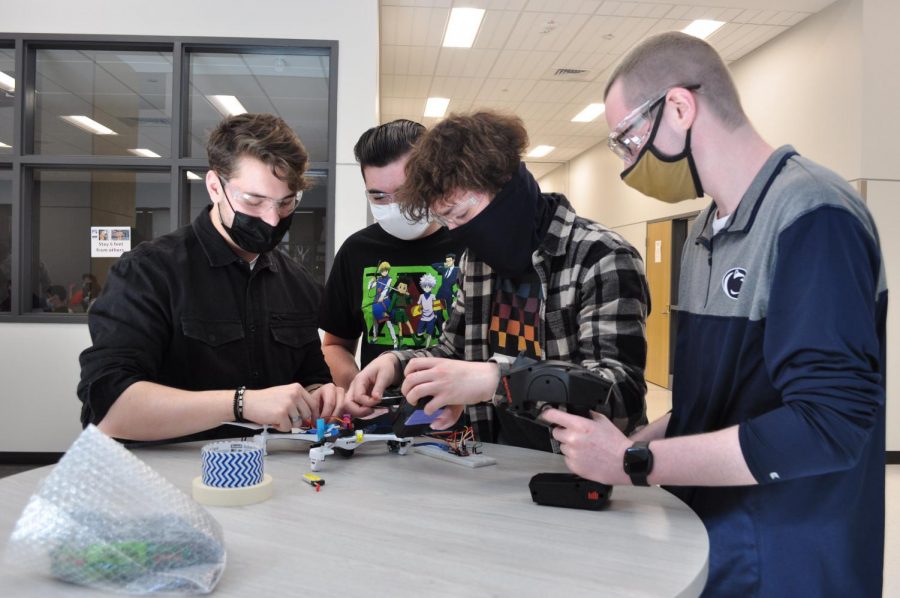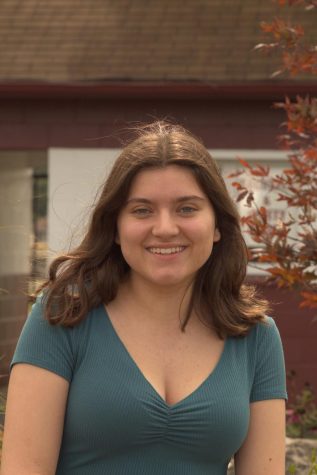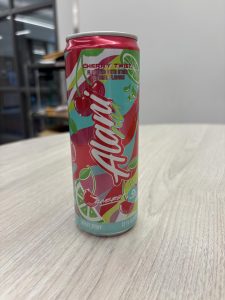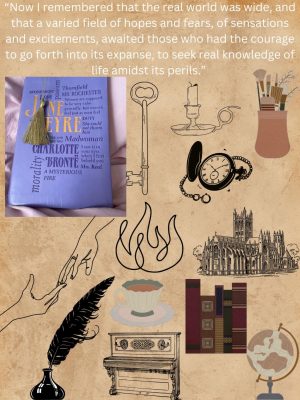Advanced Robotics class competes
(Left to right) Seniors Derek Sisito, Kaelab Ruggles, Ethan Pacifico and Corey Aikens build their robot during the competition. This team was one of two air teams from the class and placed first in the competition.
May 20, 2021
On May 13, the Advanced Robotics class competed in the Sea, Air & Land Challenge, an Office of Naval Research sponsored competition which allows teams of students to learn about the engineering process.
The challenge was sponsored by Penn State and the US Navy and provides students and youth organizations the opportunity to work with industry mentors. In the competition, students can be part of a Sea, Air or Land team. The Sea Team must develop a submersible to confirm an underwater passage for larger manned vessels. The Air Team must build a payload for a quadcopter that can detect and mark radiation after an explosion. The Land team must build a robot that can clear roadway debris and deliver supplies to people trapped in a hospital after a tornado.
The competition is not based on winning, but teams are judged based on the team’s innovation and use of the engineering and design process in building a vehicle and its ability to maneuver through a designated unknown course.
The competition started at 8:15 a.m. and ended at 1:30 p.m.
“First, we do a PDR which is just us putting the rules and regulations of the challenge into our own words so that the judges know we understand the rules. We also write down our plans for the robot we will build along with a schedule and budget. Then we build a robot following those regulations and plans and use it to complete the given challenge,” senior Ethan Pacifico said.
Pacifico has been part of robotics competitions since his sophomore year and has been in the Advanced Robotics program for two years.
Although the competition was only one day, the building and design process can last between two or three months. This gives the team time to create and build their robot.
The Advanced Robotics class had two Air Teams and two Land Teams. Air Team “Unit,” made up of seniors Corey Aikens, Ethan Pacifico, Kaelab Ruggles and Derek Sisto, placed first in the Air competition.
“It feels amazing to know that our hard work paid off and that it can all be over and done with now,” Pacifico said.








